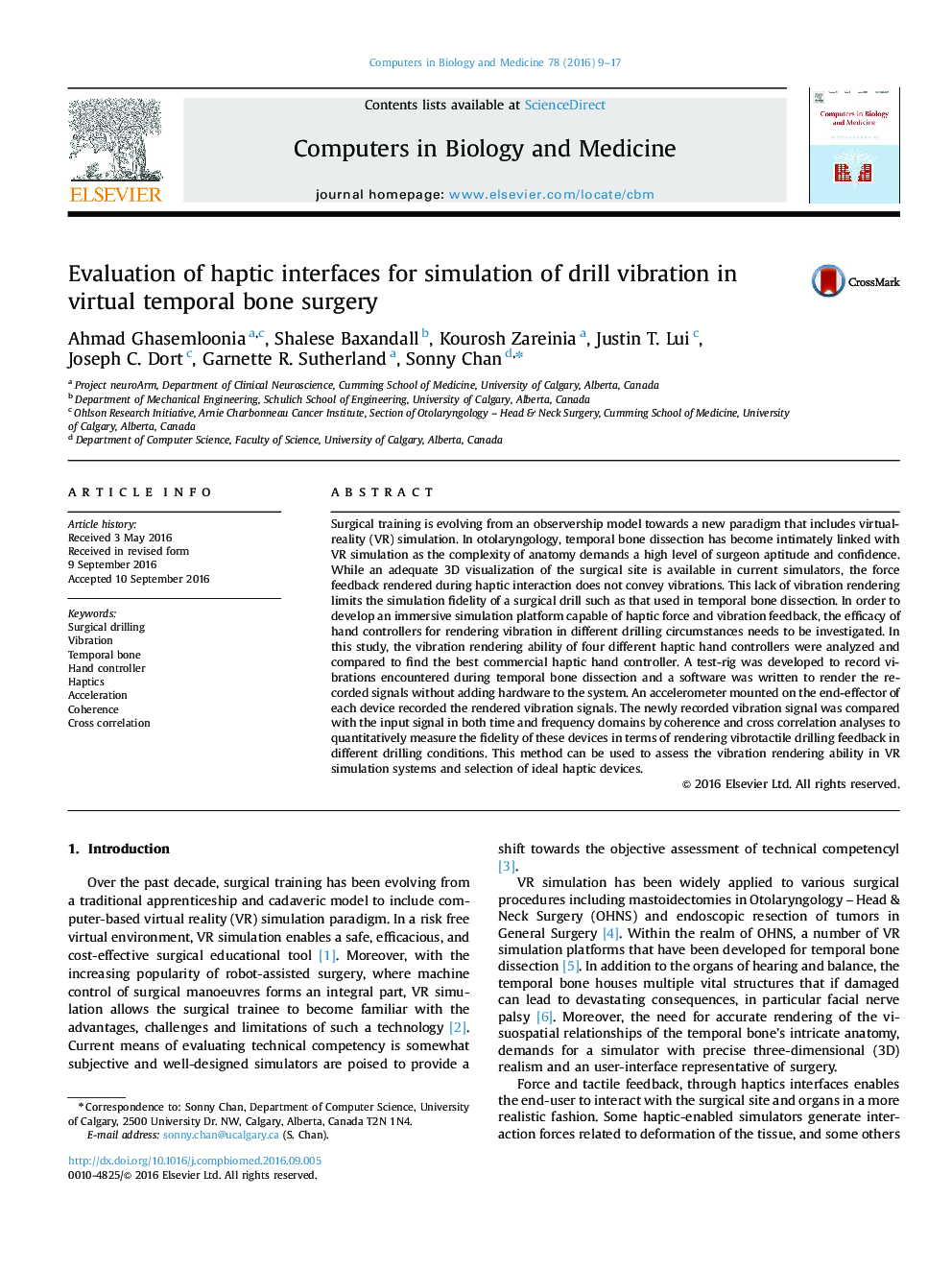| Article ID | Journal | Published Year | Pages | File Type |
|---|---|---|---|---|
| 4965048 | Computers in Biology and Medicine | 2016 | 9 Pages |
Abstract
Surgical training is evolving from an observership model towards a new paradigm that includes virtual-reality (VR) simulation. In otolaryngology, temporal bone dissection has become intimately linked with VR simulation as the complexity of anatomy demands a high level of surgeon aptitude and confidence. While an adequate 3D visualization of the surgical site is available in current simulators, the force feedback rendered during haptic interaction does not convey vibrations. This lack of vibration rendering limits the simulation fidelity of a surgical drill such as that used in temporal bone dissection. In order to develop an immersive simulation platform capable of haptic force and vibration feedback, the efficacy of hand controllers for rendering vibration in different drilling circumstances needs to be investigated. In this study, the vibration rendering ability of four different haptic hand controllers were analyzed and compared to find the best commercial haptic hand controller. A test-rig was developed to record vibrations encountered during temporal bone dissection and a software was written to render the recorded signals without adding hardware to the system. An accelerometer mounted on the end-effector of each device recorded the rendered vibration signals. The newly recorded vibration signal was compared with the input signal in both time and frequency domains by coherence and cross correlation analyses to quantitatively measure the fidelity of these devices in terms of rendering vibrotactile drilling feedback in different drilling conditions. This method can be used to assess the vibration rendering ability in VR simulation systems and selection of ideal haptic devices.
Related Topics
Physical Sciences and Engineering
Computer Science
Computer Science Applications
Authors
Ahmad Ghasemloonia, Shalese Baxandall, Kourosh Zareinia, Justin T. Lui, Joseph C. Dort, Garnette R. Sutherland, Sonny Chan,
